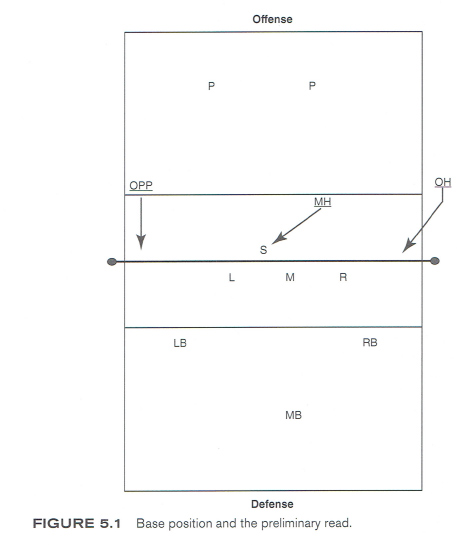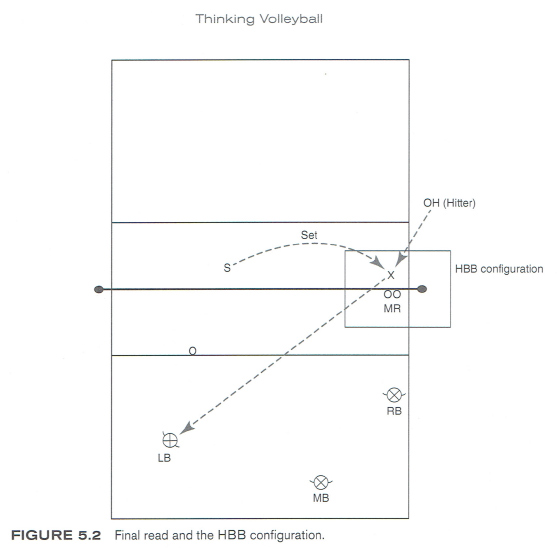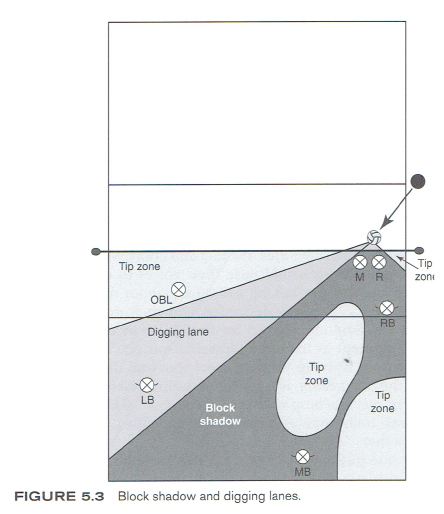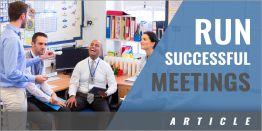|
By: Mike Hebert Originally Published in - Thinking Volleyball - Human Kinetics
As I huddled with my assistant coach to begin planning for the upcoming season, I had already decided to launch my defensive training segment by teaching the skills of reading. It seemed to be, chronologically at least, the first in a sequential chain of skills that a player must acquire in order to become a good defender. If you don't know where the ball is going, I reasoned, then you are going to have a difficult time playing defense. All of the individual defensive skill training in the world would be for naught unless the defender knew, first, how to read. The more I watched George play, the more I began to understand the importance of reading in defense. As I said earlier, sometimes he seemed to beat the ball to the right spot and pop the ball up for an easy dig. On other occasions he would sprint away from the court to pursue a teammate's wayward dig attempt and return it to play. His eyes were never stuck on the set ball. He was always watching people on the other side of the net in an attempt to anticipate what they would likely do next. During my final years at Pitt and my early years at New Mexico, I established reading as my skill du jour. By the time I arrived in Illinois in 1983, I was confident that I could teach the concepts of reading well enough to make a run at conference and national prominence. Here, in its remarkably simple form, is the outline I used to teach reading to my players. *Note: The data to calculate a game's kill percentage is readily available today by checking the box score of the match. It will list the total number of attack attempts and the total number of kills. There was no such thing at the time I was seeking data. The NCAA box score, along with universal Internet access to it, made its appearance in the mid-1980s. Reading Reading is the use of a defender's (blocker or digger) visual acuity to anticipate the opponent's attack and to move to a position on the court that will provide him the best opportunity to block, channel, or dig the ball. Reading involves two distinct phases. The first phase I call the pre-liminary read (figure 5.1). During the preliminary read, the defending team moves into its defensive base position. Base position is determined by the type of quickly developing offensive situations that a defensive team must face every time the opponent executes an in-system pass or dig. A typical base position would deploy its personnel to track the pass and be prepared to defend against an overpass (see figure 5.1). If there is no overpass, the players' eyes immediately focus on the setter to rule out or confirm a second-contact setter attack or a third-contact quick attack. If none of these options occur, the defensive team moves to the final read position, which is the defensive response to the possibilities that remain after the base position options have been ruled out. This is known as base-to-read movement.
The final read occurs between the setter's release of the ball and the hitter's contact (average elapsed time is 1.4 seconds or less*). The defenders' eyes stay on the setter to determine the upcoming offensive pattern. Defenders assess the remaining third contact possibilities by tracking and reacting to the pass/setter convergence point (P/SCP). This information will dictate which third contact possibilities are possible in that situation. Does the P/SCP eliminate certain offensive possibilities? Yes. A common example is a pass that forces the setter too far off the net to be able to run a quick set. The quick set, therefore, is one offensive option that the defense no longer has to worry about. The same could be said about a pass that is too far left or right, a pass that is too low, or a pass that is too fast. But if the pass is perfect, all offensive options are still on the table. With each touch of the ball by the offensive team, the defenders are eliminating or calculating the offensive team's options. At this point, players visually evaluate the offensive approaches and move to achieve optimal position to defend all third-contact possibilities. All blockers and floor defenders are now responsible for verbally calling out the approach patterns being run by the offense. I call this pattern identification (PM), and we verbalize what we see because it reinforces our ability to know what we are reading. As the ball is set, defenders watch the set trajectory briefly in order to identify who the intended attacker will be. As soon as the blockers and defenders know where the set is going, all eyes turn away from the setter to focus on the attacker. This is a critical point in the reading process. It is essential that defenders' eyes move off the set ball and onto the attacker. There is simply too much information available at that moment to ignore it. As the blockers move into position, the floor defenders read the evolving hitter-ball-blocker (HBB ) configuration (figure 5.2). This tells the floor defenders where the ball is likely to be attacked, and they make their final movement into the digging lane. This is, as noted earlier, called base-to-read movement. *Ulmer, K. Nov. 2011. The swing block. AVCA 2.0. 15-19. The HBB configuration is the central component of the reading process. The speed and location of the set tells the digger how much time is available to make the base-to-read move into the digging lane created by the blockers. The depth of the set tells the digger how shallow or how deep the attack will be. By watching the hitter's approach, you can see if she has either overrun the set (producing a deep or off-speed save) or underrun the set (producing a late, flat shot deep in the court). Your teammates who are setting the block will provide you with even more information. Their hands appear above the net at the point of attack. They take away angles of attack and tell the digger where to line up in relation to the attacker's approach. Diggers square up to the approach angle and body line of the attacker, but they must be careful to stay in the digging lane and not drift into the block shadow (figure 5.3). The HBB configuration can also provide a glimpse of the depth of the set. Jump early to block tight sets, and defenders look for the tip. Delay the jump against a deep set, and defenders prepare for high hands and deep angle shots. At this point, the diggers zoom in visually to get a final view of the hitter prior to contact. Assume a full swing by the hitter unless a tip or off-speed shot is signaled by the hitter's arm-lift pattern. I have found that when a hitter lifts the hitting hand and pulls it behind the head, no matter how briefly, the full swing can be expected. If the hand remains visible throughout the arm lift and swing preparation, expect the tip or off-speed shot.
Learning to read requires rehearsal, just like any other part of the game. Knowing how to read is one of those difference-making skills that need to be kept finely tuned. Above all else, remember these observations: • When they have the ball, we are watching (reading) people. When we have the ball, we are watching the ball.
|










